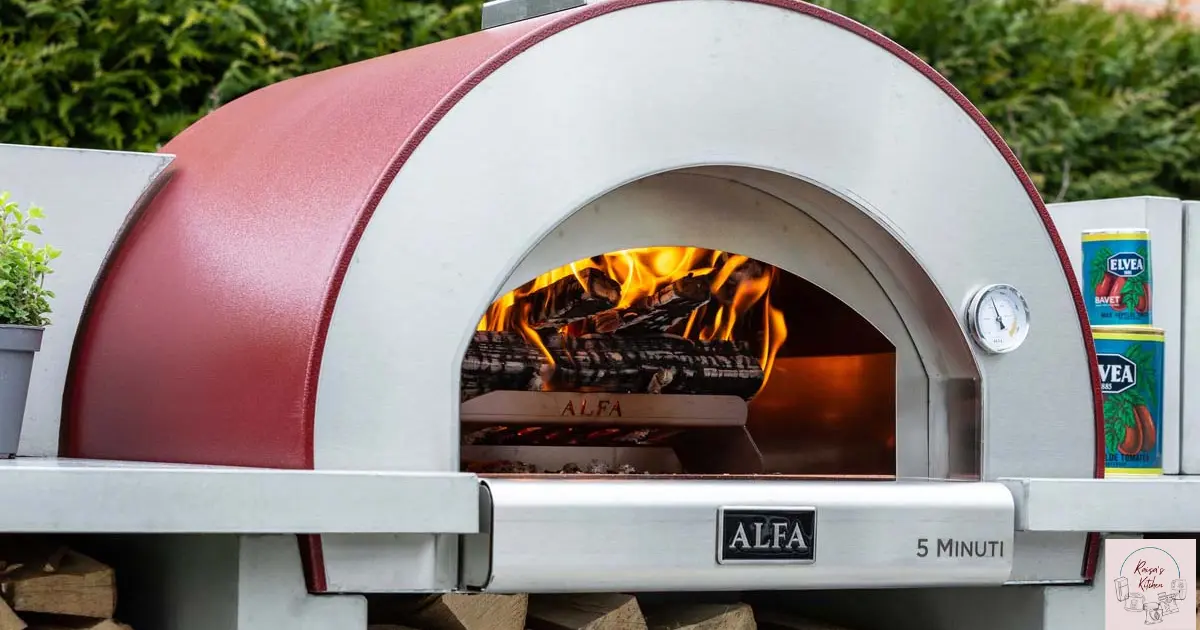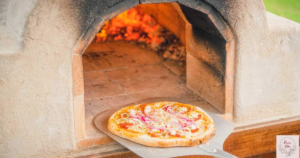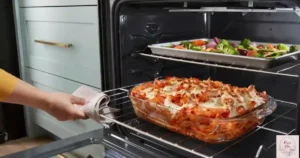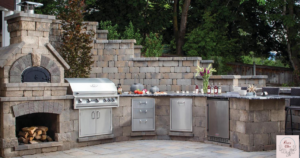Are you prepared to master the art of cooking with a Chicago Brick Oven? Understanding the ideal Chicago Brick Oven temperature is critical for getting the right crust and delicious taste.
In this specific instruction, we’ll dig into the mysteries of mastering the Chicago Brick Oven temperature, revealing the key to culinary excellence. Prepare to take your pizza-making abilities to new heights with strategies for managing heat while improving flavor features.
What is a Chicago brick oven?
The Origins and History of Chicago Brick Ovens
Chicago, known for its food culture, now has another feather in its cap: the Chicago Brick Oven. The origins of these ovens may be traced back to prehistoric cultures. Before skyscrapers dominated the cityscape, early inhabitants favored brick ovens for their durability, heating efficiency, and the particular flavor they provided to meals.
Immigrants carried their culinary traditions to the center of Chicago, blending them with local preferences. As a result, the Chicago Brick Oven came up, representing a fusion of cultures, meals, and cooking methods. These ovens are the hidden heroes behind many of Chicago’s specialties today.
Distinct Features of Chicago-Style Ovens
The attraction of the Chicago Brick Oven is not only historical. It is also technical. These ovens can be identified by their dome-shaped construction, often of fire-resistant bricks or clay. The dome design promotes uniform heat distribution, ensuring that all parts of the meal receive equal warmth.
Another unique component is the oven floor’s material, which is frequently made of solid and long-lasting stones. Such stones efficiently retain heat, providing a steady cooking environment. Consequently, everything from crispy pizzas to delicate meats is properly prepared.
The oven’s ventilation system is particularly important as it is designed to extract moisture. This keeps the dish crispy on the outside and juicy on the inside.
Chicago brick oven temperature effects on culinary excellence
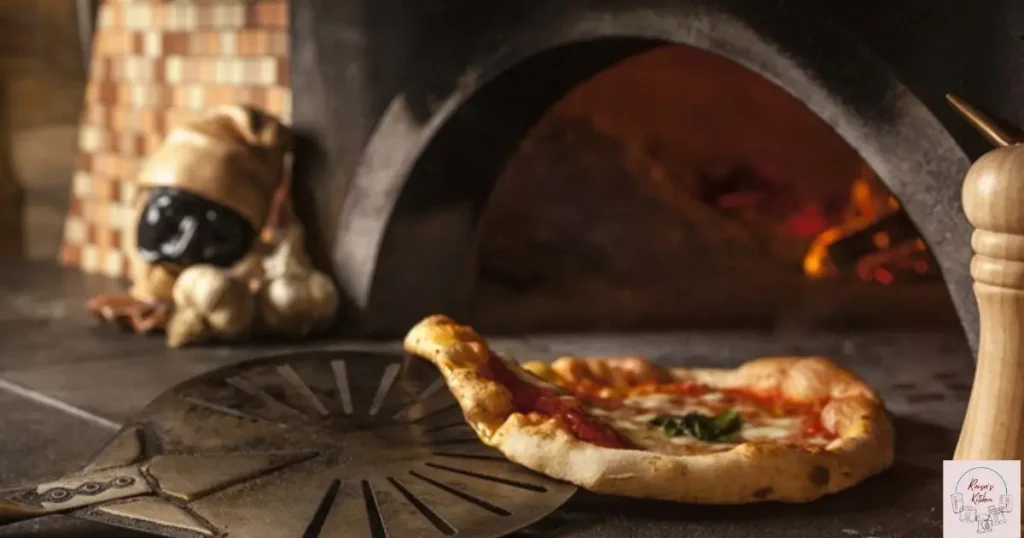
The Magic Behind High-Heat Cooking
A Chicago brick oven’s creativity rests not only in its design but also in the high temperatures it achieves. These ovens, which can achieve temperatures of up to 800°F (427°C), provide a revolutionary cooking experience.
The Maillard reaction, a chemical interaction between amino acids and reducing sugars, happens quickly at such high temperatures, giving the dish a unique taste and a rich brown crust. This interaction produces mouthwatering scents, textures, and unique tastes with brick oven food.
Furthermore, the strong heat quickly closes the outer layer of the food, retaining the moisture inside. This results in crisp foods on the outside yet lovely on the inside, a difficult combination to achieve in standard ovens.
In a Chicago brick oven, key dishes are perfected.
A Chicago brick oven can only be discussed by mentioning the renowned meals it has perfected. The Chicago-style deep-dish pizza takes center stage. Because of the oven’s unique heating qualities, this pizza has an outstanding flavor and texture with its thick crust, rich tomato sauce, and large cheese topping.
There’s also handmade bread. The oven’s high heat and moisture-wicking qualities give the bread its signature crispy shell and soft middle. These loaves show the oven’s adaptability and the skill of Chicago’s bakers.
Outside of these, the Chicago Brick Oven has found a home for various foods such as roasted meats, vegetables, and even sweets such as fruit tarts and cobblers. Each dish’s mark of oven heat provides an exquisite experience that is distinctive and profoundly entrenched in Chicago’s culinary traditions.
Measuring the Temperature of a Chicago Brick Oven
Tools and Techniques for Accurate Readings
It is critical to precisely measure the temperature of a Chicago brick oven to attain culinary excellence. Fortunately, there are methods and instruments designed specifically for this purpose:
- Infrared Thermometers: These portable thermometers provide a non-contact temperature readout. You can get a quick temperature readout by pointing the gadget towards various oven areas, particularly the oven floor. Many cooks choose them because of their precision and ease of usage.
- Oven thermocouples are probes made of two distinct metal wires that create a voltage proportional to temperature. They are useful for constant temperature readings, particularly during lengthy cooking periods. When put in the oven, the outside display shows real-time temperature changes.
- Traditional Oven Thermometers: While they may appear basic, they can resist high temperatures and offer consistent readings. They may be read via the oven door if put immediately inside.
Always average temperature readings from many oven regions for the most reliable results. This guarantees that you’re cooking at the correct temperature.
Common Temperature Ranges and Their Uses
Chicago brick ovens may reach a wide variety of temperatures, each of which is appropriate for a distinct dish:
- Low temperatures (250°F–350°F): Ideal for slow-roasting meats, making bread, and other meals that require extended cooking.
- Medium temperatures (350°F–550°F): perfect for baking most pizzas, pies, and casseroles.
- High temperatures (550°F–800°F): Excellent for quick-cooking pizzas, searing meats, and creating a lovely crust on bread.
Understanding these ranges improves dish preparation, resulting in perfectly cooked meals.
Safety Precautions for Operating at High Temperatures
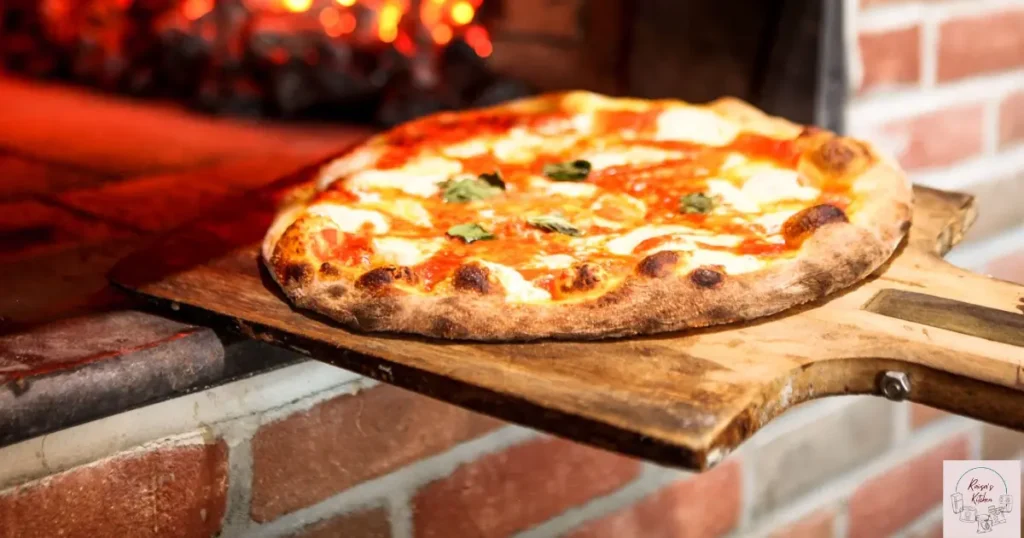
Ensuring a Safe Cooking Environment
Operating a Chicago brick oven, especially at its highest temperatures, requires extreme caution. Here are some tips for keeping your kitchen safe:
- Proper Ventilation: Because of the high heat, ensure the cooking area is well ventilated. This not only keeps the air around you cold, but it also inhibits dangerous gasses from collecting.
- Fire extinguishers: Always keep a fire extinguisher nearby. Given the nature of wood-fired ovens, this is a required precaution.
- Oven mitts: Regular cooking gloves will not suffice due to the radiating heat. Invest in heavy-duty oven gloves that can withstand high temperatures.
- Clear Environment: Ensure the area around the oven is free of burning things, such as kitchen towels, papers, or plastic goods.
Handling and maintenance tips
Regular maintenance of your Chicago brick oven assures not only its safety but also its longevity.
- Cleaning regularly: After each cooking session, brush off any remaining ash or food particles. This eliminates any potential fire threats during your next cooking session.
- Checking for cracks: The brick and mortar might develop cracks over time due to continual exposure to high heat. Inspect your oven regularly, and if you discover any cracks, fix them immediately.
- Always use natural fire starters for safe lighting. Avoid using lighter fluid and other chemicals, which might cause a fire and contaminate your meals.
- Cooling: Allow the oven to cool naturally after each use. Rapid cooling processes might cause bricks to decline.
Chefs’ Stories: Unforgettable Brick Oven Experiences
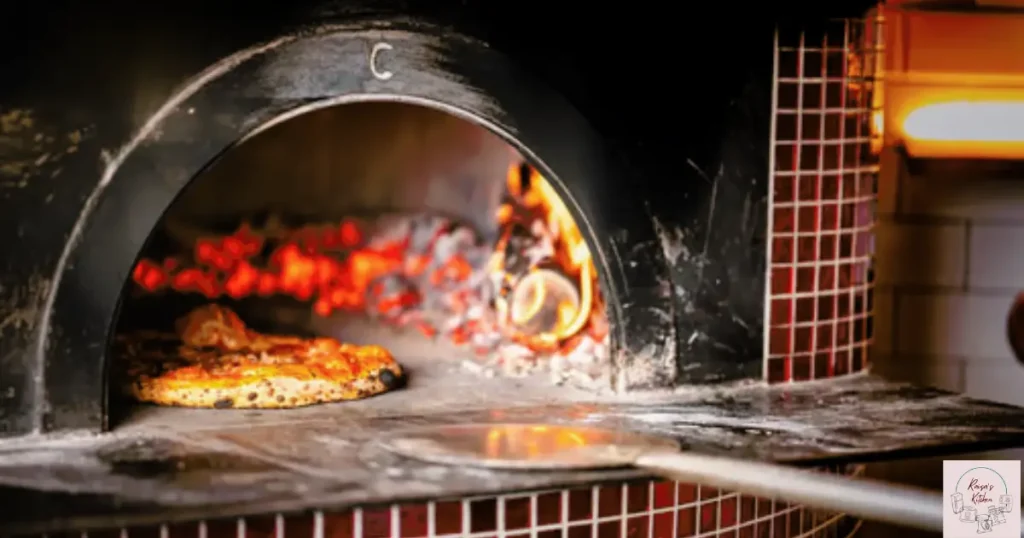
Culinary creativity is more than simply recipes and ingredients. It’s also about the tales that are roasted, cooked, and cooked along the way. Chefs who have used Chicago brick ovens have stories ranging from sheer joy to lessons learned via accidents. Dive into these stories that provide a glance behind the oven door.
Tales of Culinary Triumphs
Eleanor’s flawless bread: Eleanor, a seasoned baker from the heart of Chicago, tells her delight when she produced her first flawless sourdough bread in a Chicago brick oven. She developed an audibly crunchy crust with an inside that performed with tangy perfection after multiple attempts and minor changes to her moisture levels and proving times. The oven’s constant heat and the rustic atmosphere it generated were crucial. Eleanor describes the loaf as “a testament to patience and perseverance.”
Marco’s Pizza Revival: Marco, an Italian immigrant, grew up in Naples, seeing pizzas prepared in traditional wood-fired ovens. He became acquainted with the Chicago Brick Oven when he relocated to Chicago. The result? A pizza with the spirit of Naples and the heart of Chicago A thin crust with just the right amount of char, topped with powerful tomato sauce, mozzarella, and a dash of windy city attraction, Marco’s Pizza quickly became the buzz of the town, a place where tradition and innovation combined.
FAQ’s
What temperature range is appropriate for a Chicago Brick Oven?
The recommended temperature range for a Chicago Brick Oven is normally between 700°F and 900°F (371°C and 482°C).
How can I measure and adjust the temperature in my Chicago Brick Oven?
The temperature may be measured using an oven thermometer and controlled by altering the airflow and fuel supply.
Does the type of fuel used impact the oven’s temperature?
Yes, various fuels, such as wood, gas, or charcoal, may influence the temperature and flavor profile of food.
What changes can I make to attain different temperatures for various recipes?
To attain varied temperatures for various recipes, alter the airflow, fuel quantity, and fire placement.
How long does it take for a Chicago Brick Oven to achieve its ideal temperature?
It typically takes 45 minutes to an hour for a Chicago Brick Oven to attain the correct temperature.
Can severe temperatures harm my Chicago Brick Oven?
Yes, excessive temperatures can harm your Chicago Brick Oven, therefore adequate heat monitoring and control are required.
Are there any ideas for keeping the temperature steady during the cooking process?
Use a high-quality thermometer, adequately preheat the oven, and keep an eye on the fire to ensure that the temperature remains steady during cooking.
What function does insulation have in regulating the temperature of a Chicago Brick Oven?
Insulation helps to retain heat and stabilize the temperature within the oven, providing for consistent cooking outcomes.
How do exterior weather conditions affect the temperature of my Chicago Brick Oven?
Outdoor weather variables, such as wind and temperature, can have an impact on heat retention and oven performance.
Are there any accessories or gadgets that can help you manage the temperature in a Chicago brick oven?
Yes, accessories like pizza peels, infrared thermometers, and temperature controls may be used to properly monitor and regulate temperature.
Conclusion
Chicago brick ovens are architectural wonders that blend history and innovation. They stand out due to the extraordinary temperatures they can produce, making them a favorite among many culinary specialists. So, the next time you bite into a great brick oven-baked pizza, you’ll understand more about the magic that goes into it.
Explore more:
How long does it take to cook a pizza in a Chicago brick oven?
